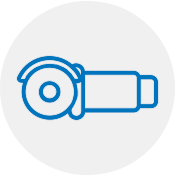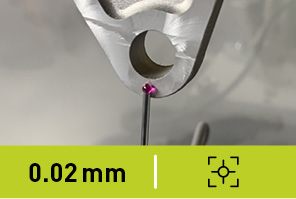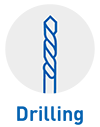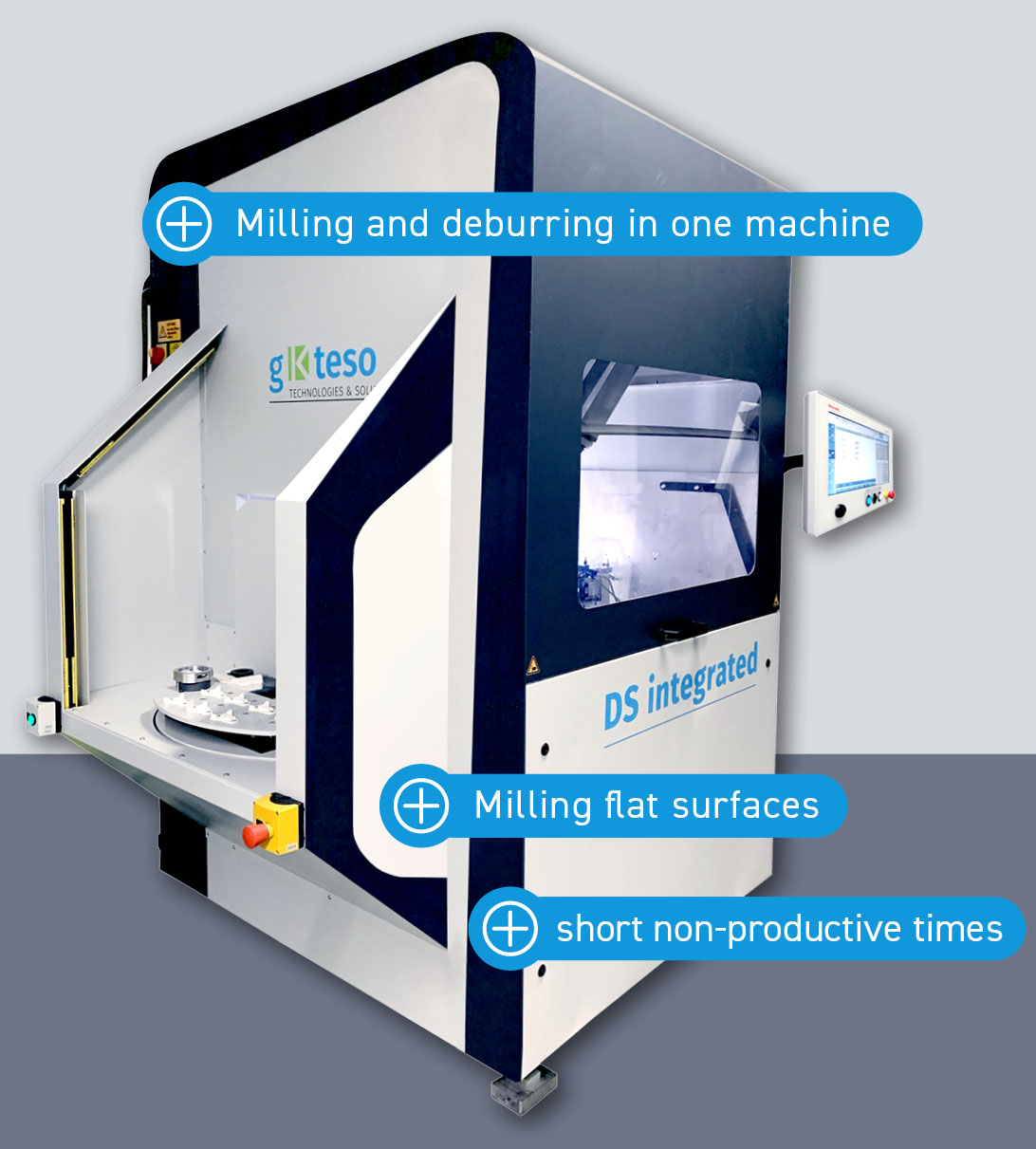Deburring with the robot
Industrial finishing with the gKteso system
• Multi-axis machining of complex workpieces
• Simple operation of the deburring systems
Deburring with the robot
Industrial finishing with the gKteso system
• High efficiency
• Multi-axis machining of complex workpieces
• Simple operation of the deburring systems
Deburring with the Industrial Finishing Robot
Automotive Industry, Hardware Industry and Other Industries Benefit from High Efficiency
At gKteso, modern deburring with the robot means precision first and foremost. gKteso’s deburring systems are equipped with multiple axes and enable the CNC reworking of complex workpieces with a path accuracy of up to 0.1 millimeters. The deburring systems work quickly and ensure high capacity. At the same time, the systems are easy to operate. Deburring with the robot works in the stand-alone version as well as integrated into a production line.
Automatic deburring of
- Aluminum
- Zinc die casting
- Plastic
- Steel
- Brass
- Bronze
Automatic deburring of
- Aluminum
- Zinc die casting
- Plastic
- Steel
- Brass
- Bronze
Automatically deburr up to one million workpieces per year with the robot
- Increase quality
- Reduce costs
- Optimize resources
Reworking of Workpieces with Modern Deburring Machines
Do you have questions about gKteso’s technology solutions for reworking? Then call us or write to us.
+49 8234 966 38 41
- 28 years of experience
- Specialists for the machining of complex workpieces
- Sophisticated modular system
Do you want to know more about deburring with the robot with machines from gKteso?
We look forward to receiving your inquiry!
DS base Deburring System – Multidimensional Automatic Deburring
Innovative Deburring Cell for Smooth Further Processing of Components
Deburring with the robot works fully automatically and with high precision in this deburring cell. The DS base is the entry-level model from gKteso and enables numerous industries to get started with automated deburring. Even highly complex components such as cylinder heads, hydraulic blocks or pump housings can be deburred in multiple axes with the robot in the DS base. Perfect surfaces are ensured even with high machining throughput.
The DS base grinds or brushes edges automatically. In addition, light milling and drilling operations or marking of components are possible – the perfect finishing for aluminum die cast or plastic components. Above all, companies from the aerospace industry, the automotive sector, in mechanical engineering, in foundries or in the supplier industry use deburring with the robot for diverse parts such as engine housings, structural components or valve housings.
Advantages:
- 5 or 6-sided machining
- Completely enclosed deburring cell
- Maximum speed 1 m/s
- Repeatability 0.05 millimeter
- Path accuracy 0.1 millimeter
DS integrated Deburring System – Process Reliability and Efficiency
Continuous Part Feeding via the Shuttle Table or Rotary Table Ensures Maximum Efficiency
The DS integrated deburring system is designed for complete automation. Compared to the entry-level DS base model, the DS integrated has an additional shuttle table or rotary table so that the machining process inside the deburring cell is not interrupted. With the DS integrated, deburring with the robot means not only removing troublesome burrs, but also milling, drilling, thread cutting and brushing of the workpieces.
Even work steps for quality assurance such as laser scanning, measuring and marking can be integrated if required. The workspace has a size of 500 x 500 x 300 millimeters.
Advantages:
- 5 or 6-sided machining
- Drilling, thread cutting and milling
- Brushing
- Quality assurance
- Includes shuttle table or rotary table

Milling
Automated deburring starts in the milling stage: Produce flat surfaces or free-form surfaces very easily with the deburring robot.

Drill & Cut Threads
In automated finishing with the robot, the sixth side of parts can be machined with ease. Drill holes and cut threads in the automated deburring cell.

Deburring
Automated deburring for efficient and precise machining of a wide variety of workpieces: Brushing, filing, milling or biaxial grinding.

Grinding
Correcting shapes or preparing workpieces for coatings – automatic grinding with the robot is particularly economical.

Marking & Checking
Surfaces and shapes are precisely measured by laser scanning or with the 3D probe and matched with target specifications. Final markings clearly identify components.
Milling with the
robot
Milling
Precise milling of contours or cut-outs with the robot
Producing functional surfaces, milling flat surfaces or machining free-form surfaces – all this can be done automatically with the robot in the gKteso deburring systems. The deburring robot processes different materials and components reliably and according to defined criteria within the shortest possible time.
- Mill functional surfaces
- Automatic milling and deburring
- Machine different materials
Drilling with the
robot
Drill & cut threads
Precise drilling and thread cutting
Ensure variant diversity and optimize workpieces with the robot
The gKteso deburring machines enable automated processing all around – even the sixth side can be provided with missing holes or threads without any problems and as required.
The automated deburring systems ensure that a wide variety of components made of different materials can be improved particularly efficiently and reliably. Subsequently inserted holes and threads allow a wider range of variants.
- Machine the sixth side
- Drill out conical holes
- Insert missing threads
Deburring with the robot
Deburring
Automatic deburring with the robot
Use different tools depending on the component
In the modern deburring cells from gKteso, components can be deburred fully automatically as required. Problematic burrs and edges occur in numerous manufacturing processes and different materials. The deburring machines process plastic parts just as reliably as cast components made of stainless steel, zinc die casting or aluminum. The appropriate tool is selected according to the intended use – from brushing to filing, milling and biaxial grinding, various deburring processes are possible.
- Automatic deburring
- Deburring independent of material
- Different deburring methods
Grind with the
robot
Grinding
Regrinding and sharpening
Automated part machining often requires shape corrections, finish machining or preparation for coatings
The aim of fine machining is to produce workpieces of high quality. On the one hand, this refers to the surface finish, while on the other, the quality is determined by the dimensional accuracy of the parts.
To ensure that workpieces for further processing comply with the specified limit values and tolerances, corrections may be necessary in finishing. Regrinding and sharpening allow transitions to be significantly improved and workpieces to be precision-finished.
- High-quality surface finish
- Optimal transitions
- Grinding of separation seams

For example, in the case of cast components, the separation seams can be ground perfectly with our systems. Raw materials that have already been pre-ground can be reground to further improve the surfaces.
- High-quality surface finish
- Optimal transitions
- Grinding of separation seams
Mark with the
robot
Mark and check
Ensure quality standards and clearly assign components
Laser scanner and 3D probe ensure precise measurement of complex structures
Visual inspection was yesterday – today, workpieces are reliably and reproducibly inspected using laser scanners or 3D scanners. Quality control with the robot ensures absolute dimensional accuracy of the components within predefined tolerances. Either a specific area or the entire part can be inspected.
There is also an increasing requirement for components and products to be clearly marked throughout the manufacturing process. Especially if measurement regulations have to be complied with, it is important to document the conformity of the parts after measurement by means of an appropriate marking.
- Quality inspection with the laser
- Automated marking
- Clear marking of workpieces
Whether it be a component number, date or an identification code, the marking can be applied fully automatically with the robot. Depending on the requirement, it is applied by laser, printed or engraved.
- Quality inspection with the laser
- Automated marking
- Clear marking of workpieces













